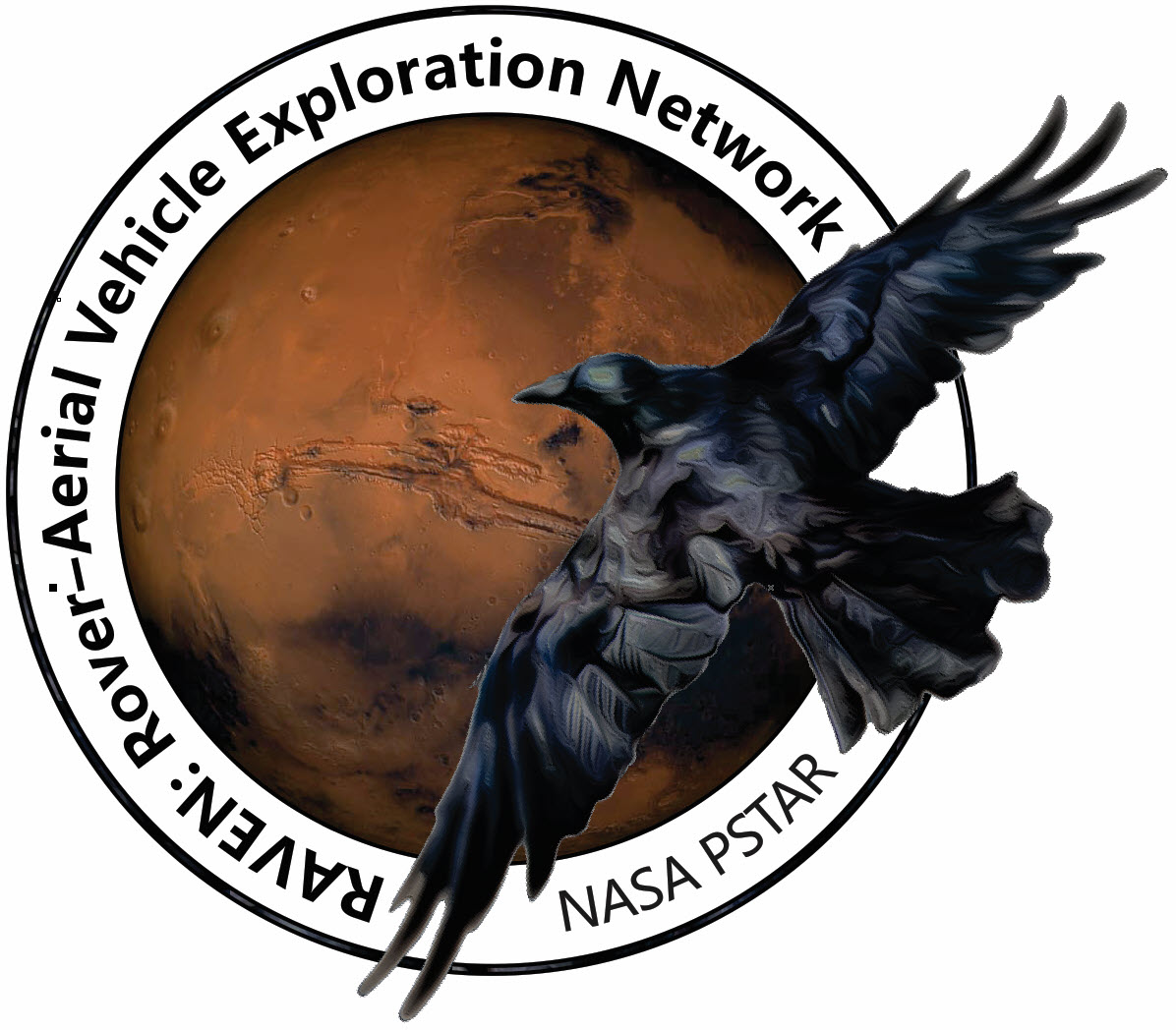The three core technological elements of the Rover–Aerial Vehicle Exploration Network (RAVEN) include:
RAVEN Claw
The RAVEN Claw is an Unmanned Aerial System (UAS), like the Mars Helicopter, but equipped with a modular sample acquisition device and sensor payload. The RAVEN Claw is a prototype drone, developed by Honeybee Robotics, which will be used to determine the best instrument configurations and approaches to science operations for future Mars RAVENs.

The RAVEN Claw is a prototype Unmanned Aerial System (UAS) developed by Honeybee Robotics will be equipped with a sample acquisition device to test new methods of sample characterization and collection within Mars analog environments in the Highlands of Iceland.
Rover
The Rover (i.e., the Mars Exploration Science Rover (MESR)) is a fully autonomous robotic vehicle that is analogous to Mars 2020 (Perseverance) and the Mars Science Laboratory (Curiosity). The Rover was developed by the Canadian Space Agency (CSA) and will be reconfigured to communicate with the RAVEN Claw to test science operational scenarios within Mars analog terrains in Iceland using multi-agent robotic systems.

The Mars Exploration Science Rover (MESR) is a state-of-the-art rover developed by the Canadian Space Agency (CSA) to test new technologies and operational scenarios to improve the efficiency and scientific return of future missions to the Red Planet.
Terrain Relative Navigation (TRN)
Terrain Relative Navigation (TRN) offers a sophisticated means of determining a robot's location using natural landmarks. Mars does not have a Global Positioning System (GPS), and so the Jet Propulsion Laboratory (JPL) developed TRN for the precise positioning of spacecraft during the Entry, Descent, and Landing (EDL). RAVEN will adapt TRN for use with UAS-derived images and topographic data to more precisely locate both drones and rovers in GPS-denied environments, paving the way for the next generation of planetary exploration missions to Mars.

Terrain Relative Navigation (TRN) utilizes computer vision techniques to compare observed landforms to a virtual map of the terrain, thereby enabling real-time feature matching to determination of a robot's location relative to natural landmarks. Additional layers of information can also be added to the virtual map to avoid hazards and navigate more efficiently toward scientifically interesting targets.
The Next Generation of Planetary Mission Desgins
RAVEN will build upon the next generation of planetary exploration missions that will utilize unmanned aerial systems (UAS). For example the Mars 2020 mission includes the Perseverance Rover and the Mars Helicopter technology demonstration. Once the ability for UAS to successfully fly on Mars has been demonstrated, it will open the frontier for new integrated mission architectures using a rover in combination with a drone. RAVEN will test new drone-based sampling technologies and refine operational workflows involving these two robotic systems working together. UAS will also soon fly on Saturn's moon Titan as part of the Dragonfly mission. The era of drone-based exploration of other planetary bodies is just beginning, and RAVEN will help to develop new methods of using this technology more effectively.

Left: The Mars 2020 mission includes a rover and a helicopter. Right: The Dragonfly mission also includes a helicopter that will explore Titan.


